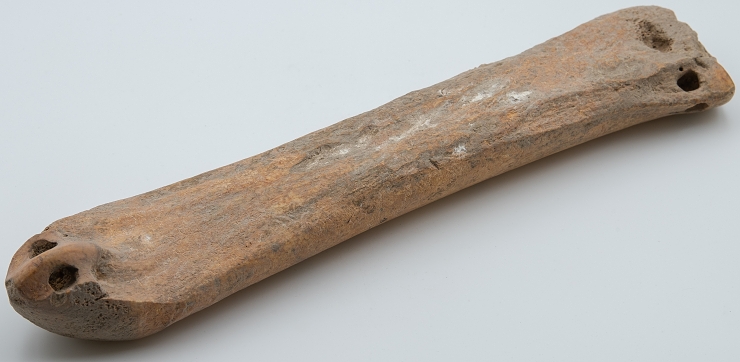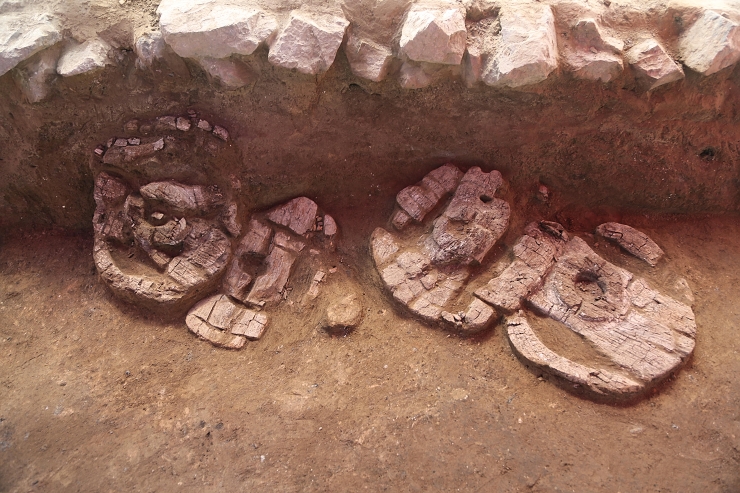Ćtyři tisíce let reverzního inženýrství.
Bronze Age skates discovered in China, look like European
Categories: Nálezy nejenom s detektorem v Číně
A 3,600-year-old bone skate has been discovered at the site of the defunct Goaotai settlement in the Xinjiang Uyghur Autonomous Region in northwest China. These are the first bone skates ever found in China, and they are similar in design and style to similar skates of the same age in Europe. They may thus refer to the close connection between the two worlds in the Bronze Age.
The skates are made of ox and horse bones. Their blades are perforated at the front and back, and the holes were pierced by leather straps which were used to fasten the skates to the feet. The front of the skates is visibly more pointed compared to the back. Compared to modern skate blades they are much flatter, but still formed sharp enough edges to allow skating in the style we know today.
The ruins of Goaotai lie at the site of Jirentai Goukou, where a Bronze Age settlement and necropolis stood on a high plateau of the Andronovo pastoral culture. The skates lay in one of the tombs about 700 m from the settlement. Here, archaeologists have uncovered a huge stone burial complex for the time, which is the largest and best-preserved Eurasian steppe burial site ever discovered. The settlement and the graves date from between the 16th and 15th centuries BC.
The raised platform has a square base of 1.5 hectares. It is enclosed by a stone wall, in front of which are 17 stone lines paved with laterite (a rock with a high iron oxide content), the pattern of which, when viewed from above, looks like sunbeams and may thus refer to a sun-worshipping culture.
Last year, archaeologists discovered over 40 wooden carts here, with 11 massive wooden wheels preserved, as well as some parts of the carts, including wooden axles. Archaeologists believe they were used in the construction of the platform mound and then deliberately dismantled for storage as part of a ritual burial. These are the oldest wooden wheels discovered in China.
The excavation of the tomb uncovered over 2,000 objects and remains. Most of them are ceramics such as cylindrical and round pots, jars with folded arms, high necked pots, clay cups, etc. In addition to stone tools, bronze, bone and iron tools were also found in a more sparse representation. There are also bones of domestic animals (cattle, sheep, horses). According to experts, the presence of animal remains is evidence that the tomb belonged to an elite pastoral family of the Andronovo culture.
Roman Nemec
Sources: livescience.com, thehistory.com

3,500-year-old bone skates found in China are similar to European Bronze Age skates

Gaotai tomb

wooden carts

wooden wheels
The article is included in categories:







